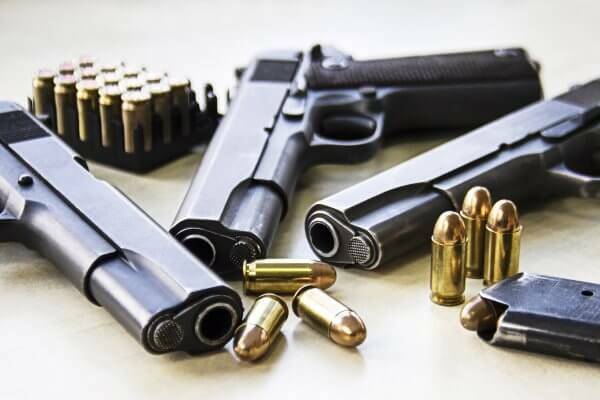Handgun Skills & Drills You Can Use
Handgun Skills & Drills You Can Use
By Steve Hensyel – Hawkeye Firearms Instruction
A request I often get from people is about hands on drills they can use to improve their accuracy and performance. The more techniques and drills we can add to our list as a way to improve our shooting the more we will be prepared for any situation. While there are literally hundreds of drills, described below are some of my personal favorite drills that range from very basic to more advanced.
First and foremost we need to give the obligatory reminder about safety. You should know and practice all the rules of safety when handling, shooting or practicing with any firearm. The Author and Publisher assume no liability for the material contained within this article.
One often less considered item when practicing is a target. There are a lot of variants in targets, target materials, shapes, sizes, and colors. The more life like you can make your targets the more realistic your training will be. As mentioned in a previous article – target your target towards what you are practicing for. Self defense, police style silhouette or IPSC targets make for very good practice. Using a mannequin or just putting a t-shirt over a cardboard cutout can help them become more realistic as well.
Train Smart
It is a commonly used cliché but you will react as you train. During a self-defense encounter or a life or death situation the book goes out the door. Training our muscle memory and preparing ourselves for what may happen will help give us a foundation on how to react and what to expect. While repetition is one important tool that is often used to ingrain reactions it is only one aspect. Having an understanding of what you are practicing, the methodology behind it and why you are practicing will help make the connection between your mind and muscles. I encourage everyone to not only train hard but also train smart.
Now onto the Drills
Dot Torture Marksmanship Drill
This is a marksmanship drill, fired at 3-7 yards.
Targets are six 2″ dots placed in 3 rows and numbered 1-6
Requires a minimum of 2 magazines and 12 rounds for one drill cycle.
Starting from low ready position, on go, raise and fire one round at the number 1 dot. Upon hitting the dot move to the next number and so on. After hitting all 6 dots then perform a reload and repeat. The ideal completion of this will be to have 2 hits on each dot using only 12 rounds.
When you can do this clean on demand, extend the length or start timing and work on speed but
maintaining accuracy. If a single shot is missed, you flunk. Only hits count and only perfect practice
makes perfect. This drill helps improve speed and accuracy, as shooting quickly will not do any good if you cannot get hits.
This target can also be used for target command / acquisition practice. Have a friend stand near you and call numbers to shoot.

Correcting Trigger Slap
Shooters moving from slow fire to rapid fire often move their trigger fingers all the way off the trigger
between shots. This has a couple of negative effects. First, it takes time. Second, it leads to inaccuracy because the tendency is to slap the trigger on the second and subsequent shots.
To fix this, follow through on your shots with your trigger finger. Hold the trigger back all the way through recoil. When the sights are again aligned slowly release the trigger until the link re-engages. Then press to make the next shot.
Once you know how far to release the trigger of your gun, both accuracy and speed improve.
Dummy Round Drills
Teaches: flinch control and follow through during live fire.
Requires: best with shooting partner, can be done alone.
If the hammer falls on an empty chamber during slow-fire shooting, your gun shouldn’t budge, your sights should stay aligned and on target, eye still clearly focused on the front sight. If the gun dips down (or jumps up), you’re anticipating the recoil.
Have someone else load a magazine for you, mixing live rounds with snap caps, or for a revolver, leave one or more chambers empty. When you fire the gun, concentrate on keeping the gun steady, sights on target, no matter what happens. When the snap cap comes up you’ll be able to check your flinch. If you’re doing well, the gun won’t budge. You can do this yourself by loading several magazines and mixing them up, or loading a magazine with your eyes closed, or rotating the cylinder with your eyes shut before closing it.
The Vice-Presidente
Requires 2 magazines with 6 rounds each.
Using three IPSC targets at 7 yards. Begin facing targets. On signal, draw and engage each target with two shots each, reload and fire two each again. A good time for this would be 7 seconds or less.
To increase difficulty space the targets further apart, start facing away from the targets, or again have friends mix them up and mark them as shoot or no shoot as you are turned away.
Cover
In any self-defense use of a firearm, avoiding getting shot is equally important as stopping the attacker.
Know and practice identifying cover versus concealment. You should always practice moving to cover and shooting from cover when you practice with your handgun.
These are just a handful of some of the drills you can use. Hopefully this will give you some ideas on how to better practice for real world situations. Invent or come up with your own drills designed for you and your shooting buddies. Maybe one will become popular and be named after you?

